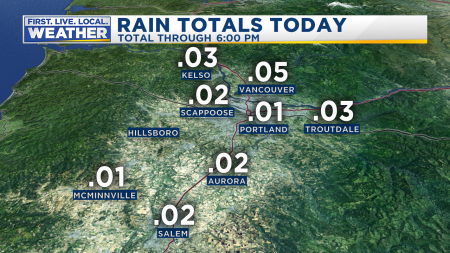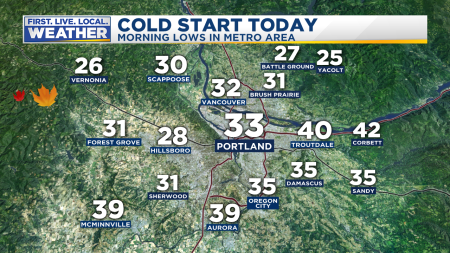8pm October 31st…
Each fall people ask me “what this winter will be like” or “I’ve heard it’s going to be a bad winter“. By the way, I’ve NEVER had a person say “I’ve heard it’s going to be an easy winter“. Apparently most of us are quite cynical and expect the worst.
I don’t put out a “winter forecast”. That’s because the few forecasts I see are frequently (not always!) wrong and seasonal/climate forecasting has a long way to go before we say we can “forecast” a winter. So we’ll just call it “my thoughts” for the upcoming winter since we can at least glean a few ideas by looking over some weather tidbits. I’ve been doing this for a few years and it seems to work.
For those of you with a short attention span, just three points:
- Plan on a “regular” winter this year. There’s no reason to think we’ll be abnormally wet or dry. Expect that at least once we’ll see some snow or freezing rain in the metro area. No, we have no idea when that could happen. Assume that we’ll get a hard freeze (down to 20 or lower) at some point too.
- I’d be surprised if we have a bad snow year in the Cascades, but I’d be just as surprised if we had a big snow year. Gut feeling is we’ll see normal or slightly below normal snowfall. Go ahead and plan on a normal ski season with the usual variable ski conditions from week to week.
- NO ONE is able to forecast a specific event/events weeks or months ahead of time. If someone tells you (for example) we have 8-10″ snow on the way sometime in February, that’s meteorological click-bait.
Notice there’s nothing earth-shattering weather-wise in those two statements. That’s because we aren’t seeing a lot of guidance that tilts the forecast one way or another.
Okay, let’s jump into it. First a summary of the past 3 winters:
2018-2019
Up until around February 3rd, we experienced the most boring winter I can remember in my 28 winters forecasting in the metro area. Long periods of weak weather systems, almost no real “storms”, and mild temperatures. This is typical for a weak “El Nino” winter. That means the tropical Pacific Ocean was a bit warmer than average. Things were progressing according to plan…
But then all hell broke loose around February 5th. Cold northerly flow became a common weather theme for much of the following five weeks! Several snowstorms moved through the region, affecting different parts of the FOX12 viewing area at different times. Who can forget the “Kale Fiasco” when some metro-area stores ran out of kale & other groceries? A good learning time for local forecasters…
2017-2018
Two winters back was a “La Nina” winter which means for the 2nd consecutive year the tropical Pacific Ocean was cooler than average. For meteorologists (and you) it was a relatively “slow” winter; warmer & drier than average. We had a brief snow/ice event at Christmas and then one fun week in late February with snow. But that was it.
2016-2017 This was the first “La Nina” winter; it was crazy, wild, & cold. There were numerous ice & snow storms in the Portland metro area, Gorge, & Eastern Oregon.
As I mention above, there is still a LOT we don’t know about our climate and seasonal shifts in our weather. It’s hard to believe, but this will be my 29th winter forecasting here in NW Oregon (started forecasting professionally off-air in October 1991).
Typically we focus on the La Nina/El Nino oscillation across the tropical Pacific and what that means for Northern Hemisphere winters. That is still the case, but a few other factors are likely playing into our winters including this one…a weakening polar vortex: https://www.eurekalert.org/pub_releases/2017-09/pifc-wce092217.php. That research, published just a year ago, suggests there have been increasing outbreaks of cold polar air farther south as the arctic warms. Interesting eh? Of course down here in the Pacific Northwest the issue is WHERE the cold air dumps south. For example, that first La Nina winter (above) we had cold air come down to our east quite frequently (a frozen Eastern Oregon). Then during the 2nd La Nina winter something was different and for some reason the cold air stayed farther east. We had a warmer/drier winter during a La Nina year! This past winter, during an El Nino event, we saw that highly amplified cold northerly flow with a strong ridge of high pressure offshore. But it was only during the last few weeks of winter leading into early March. Most surprising to me is that the pattern lingered for so long. So each winter is different and lots more research is needed.
At this point NOAA is expecting this to be a “neutral” winter; most likely on the “warm side” bordering a weak El Nino event. So we don’t have solid La Nina event in the Pacific this winter, not a solid El Nino either. Just in-between or it could end up a very weak El Nino
Of course this sure doesn’t help the outlook much does it? One more reason not to make a “winter forecast”!
What everyone really wants to know is…will it snow at MY house this winter???
For fun, I looked at all 21 “ENSO Neutral” winters since 1950. There have only been 4 in the past 20 years, most recently in 2013-14. In 2/3rds of these winters, we’ve picked up at least 1″ of snow in Portland at some point during the winter. Two of the past four have featured some sort of snow storm (several inches at one time). That was in 2012-13 & 2003-04. But we’ve been hosed some of these years as well.
To summarize: Flip the dice, I don’t see anything that screams there WILL be snow or WON’T be snow this winter. There’s a decent chance we see white at some point though, even if it’s just an inch or two.
By the way, here’s a national look at those ENSO neutral years temperature-wise. Interesting cold signal for most of the nation but not here.
Then the precipitation compared to the long term average for those winters. These types of winters have tended to be drier than average in California, but wetter in Washington. That doesn’t tell us much if we live a few miles from the Columbia River! Right on the line between wetter and drier.
SKIING & MOUNTAIN SNOWPACK
It’s time to get your season pass!
No, no one has instructed me to send that message out, and no one promised me free skiing if I put that message on this page. Of course it IS the time of year to get your pass; one reason for the attention-grabbing blue. Prices tend to jump sometime after Halloween, exact dates depend on the resort. More important…
We probably have a relatively normal snow year in the Cascades on tap for 2019-2020.
Why do I think that’s the case?
- All ENSO neutral winters have given us abundant snowfall at the Cascade ski resorts. Some years well above normal, some a bit below. At both Government Camp and Mt. Hood Meadows (two snow-measuring locations) this is the case.
- Only one of the worst ski seasons have been during neutral winters. The terrible years that many of us remember (1976-77, 1991-92, 2004-05, 2014-15) are not on the “neutral” list. That said, there was one…1980-81 was pretty bad. Only 60″ fell at Government Camp from December-February
Take a look at Cascade snowfall during the 21 ENSO neutral winters we have seen since the early 1950s at Government Camp. Average yearly accumulation (for any year) is 260″ (click for full-size)
Obviously each winter is quite different, but the average for these neutral years is just a bit lower than the long-term average.
Now I’ll throw in Mt. Hood Meadows (in red)
Same idea, no disastrous winters, but quite a bit of up/down each year. Near normal for neutral winters.
I know it has been a long read, but hopefully you have a little better feeling for what we might see during this upcoming winter.
Chief Meteorologist Mark Nelsen












 Posted by Mark Nelsen
Posted by Mark Nelsen 





























